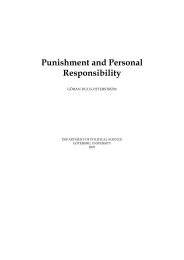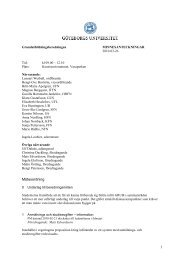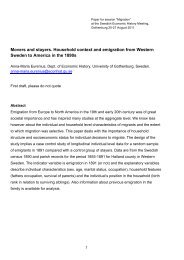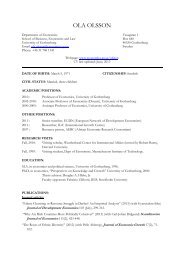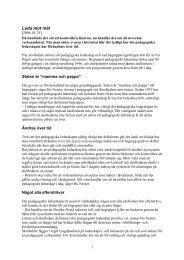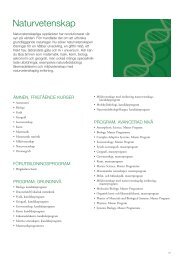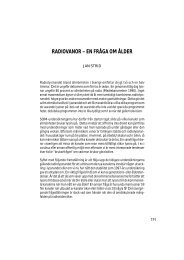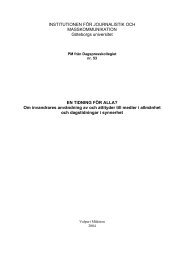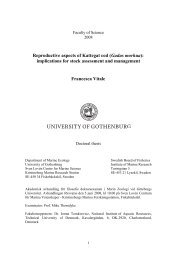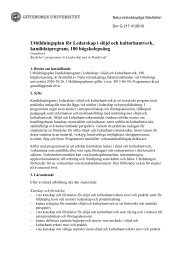Equal Opportunities Work - Theories about Practice
Equal Opportunities Work - Theories about Practice
Equal Opportunities Work - Theories about Practice
Create successful ePaper yourself
Turn your PDF publications into a flip-book with our unique Google optimized e-Paper software.
Sexual harassment and equal opportunities<br />
work<br />
l.Introduction<br />
On I July 1998 the provisions of the Swedish <strong>Equal</strong> <strong>Opportunities</strong> Act<br />
regulating the obligation of an employer to prevent and counteract sexual<br />
harassment at the workplace were made more stringent. In short, the aim of this<br />
amendment was to accentuate the fact that sexual harassment in working life is<br />
not acceptable, to introduce a definition of sexual harassment. and to stress the<br />
obligations of the employer to implement active measures to prevent, counteract<br />
and deal with sexual harassment. A regulation was added making the employer<br />
liable to pay damages if no measures are taken in relation to reports of sexual<br />
harassment.<br />
This means that work to prevent sexual harassment is, today, a legislated<br />
aspect of equal opportunities work in Sweden. But what should an individual<br />
actively working with equal opportunities do when the problem of sexual<br />
harassment arises? Is it a legal issue? A comprehensive problem in the work<br />
environment? A matter of knowledge? Or is it a question of knowing how to<br />
handle and report sexual harassment?<br />
2. Theory and practice<br />
The aim of this text is to discuss sexual harassment against the backdrop of<br />
working with equal opportunities in practice.<br />
How does one formulate a theory <strong>about</strong> what happens in practice? This is a<br />
highly problematic question. It is easy, for instance, either to<br />
overintellectualize the matter, to shroud it in mystification, or to oversimplify<br />
it in terms of black-and-white dichotomies. How can such pitfalls -- the gross<br />
dichotomies, the oversimplified views, and the altogether-too-heady<br />
expositions <strong>about</strong> practices -- be avoided? They are often related to some kind<br />
of theoretical block, such as trying to use one's pet theory as too sweeping a<br />
point of departure, or not modifying an initial hypothesis after an encounter<br />
with concrete experience.<br />
To formulate a useable theory <strong>about</strong> practice, one should oscillate between<br />
practical and theoretical endeavors, as well as testing various theories on the<br />
same phenomenon. It is vital to take account of the full range of concrete<br />
experience to be analyzed, rather than disregarding that which may be in<br />
33




